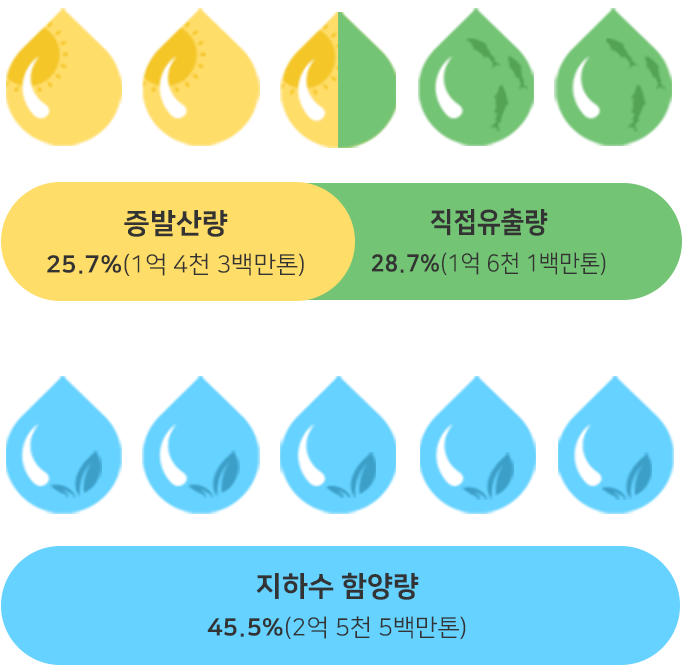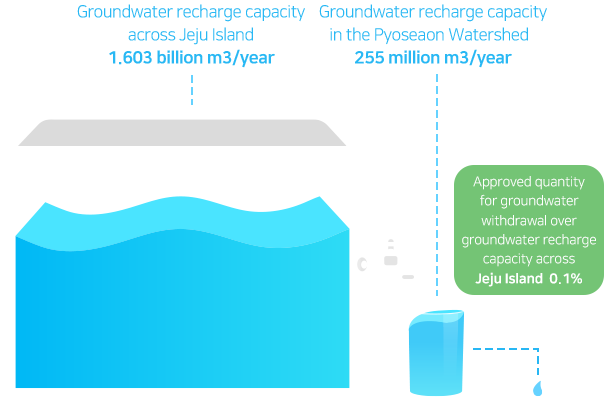Scoria holds water
CHECK POINT1
Q. How does rainwater stay underground after
it permeates into the ground?
A. Many people think groundwater flows like a river in one layer of the strata. However, groundwater exists in the cracks and openings between rocks and moves slowly and continuously into deeper rocks, depending on pressure and gravity.
The groundwater of Jeju Island exists between volcanic rock layers which we call volcanic bedrock water.
CHECK POINT2
Q. What is so special
about volcanic bedrock water?
A. The subsurface geological structure of Jeju Island has volcanic rock layers which is created by volcanic activity. They are irregularly distributed with sedimentary layers and formed during the resting periods of volcanic activities. As a result, when rainwater permeates into deeper underground, contaminants are filtered out and healthy minerals such as vanadium and silica are dissolved and finally create cleaner and tastier groundwater.
470,000 years ago, lava was holding Samdaasoo
Jeju Island is the largest volcanic islands in South Korea, formed through several episodes of volcanic activities over a long period of time, 1.8 million years ago. As a result of volcanic activities, Jeju Island has the geological structures of many lava beds stacked on top of one another, like pancakes.

Jeju Samdasoo was found by excavating down to volcanic rock layers at a depth of 420 meters underground.
After analyzing the ages of volcanic rock layers, it was interpreted that the lava beds located 420 meters below the ground where Jeju Samdasoo is drawn from, were formed from the volcanic activity that occurred about 470,000 years ago.
Rainfall brings a gift
Not all rainfall becomes groundwater as some evaporate into the air and some flow into streams, rivers, and/or ocean. In the Pyoseon Watershed where Jeju Samdasoo factory is located, 25.7% of rainwater evaporates into the air, 28.7% flows into streams, rivers and oceans, and the remaining 45.5% infiltrates into the ground to become groundwater and comes to us as a gift, Jeju Samdasoo.
표선유역 연간 수자원 총량
(5억 6천만톤)
![]() X 10
X 10


Wouldn’t there be a problem in the groundwater management
if we continue to produce the Jeju Samdasoo?
Groundwater is a circulating resource, that is formed when rainwater or melted snow penetrates the ground. Because it is not an infinite resource, proper amounts should be used to allow the water source to recharge with rainwater.
The groundwater recharging capacity of the Pyoseon Watershed where the Jeju Samdasoo factory is located, amounts to 255 million m3/year and the groundwater that can be used sustainably amounts to 103 million m3/year.
The permitted intake amount of Jeju Samdasoo is 4,600 m3/day, which is no more than 0.1% of the groundwater recharging capacity across Jeju Island.
Q 현재 페이지에서 제공되는 정보에 대해 만족하십니까?
